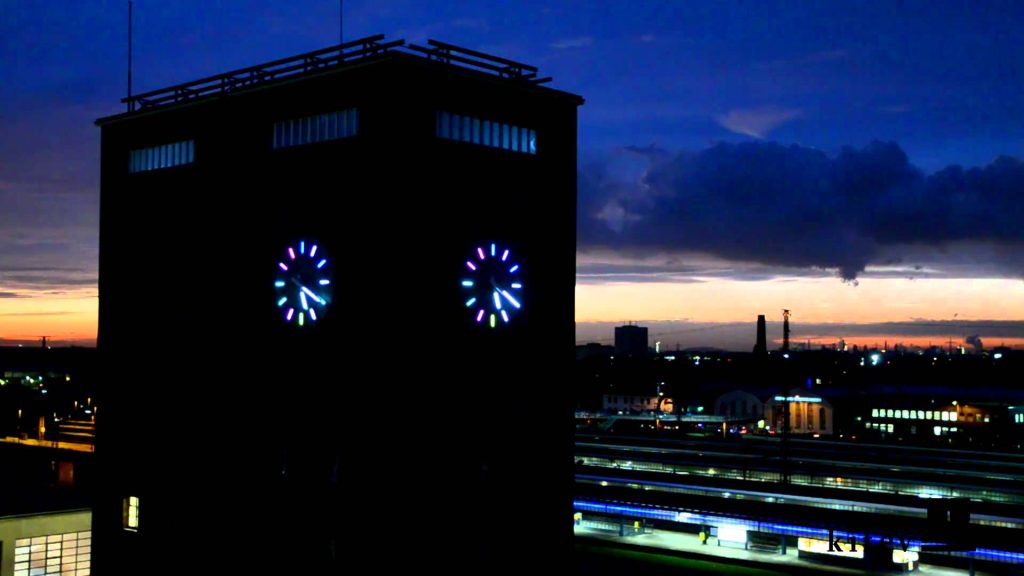The old central railway station in Oberhausen was designed in the Bauhaus style, with clean lines and a boxy clock tower. Once the center of a busy industrial district fostering an enormous steel factory, Oberhausen represented the heart of Germany’s industrial might. Today, the factory is gone, many of the surrounding buildings are largely unused, and the commercial activity has been moved to the nearby shopping mall. Moreover, public transport in the area has drastically decreased. Enter Kitev, a multicultural group of artists, activists and architects revitalizing these empty spaces and breathing life into the area, innovating and also engaging minorities with the community.
Kitev managed to convert the old clock tower and to transform it into a lauchpad for social innovation. They are also engaging local officials, as well as business and civil society activists in order to build a new sense of community in a city struggling with disinvestment and long-term unemployment.
Kitev was started by Berlin-based architects Christoph Stark and Agnieszka Wnuczak. They arrived in Oberhausen in 2005, participating in a local art competition looking to make the station’s platform areas more attractive.
Their ideas imagining large sculptures on the platforms and illuminating the tracks with color-changing light tubes managed to win by basically exploiting the unused, empty spaces.

Being highly intrigued by the potential of the clock tower, and backed by the city council, Stark closed a deal with Deutsche Bahn, allowing his group to make some renovations. Their work started with the clock, which did not only tell the time again but provided passersby with digital displays of weather information.
The deal between Stark and Deutsche Bahn allowed Kitev to use the tower as an office space, rent-free for 25 years, in exchange for renovating the space. Slowly but surely, the clock tower became a hub of spreading and testing ideas focused on urban regeneration, hosting entire delegation of architects, artists and urban planners looking for ways to exploit and activate empty urban spaces.


The inclusion of culture in such spaces is essential, Stark argues. Kitev is now focused on turning a vacant retail space on the station’s ground level into a cultural area, able to host exhibitions for instance.
Another innovative idea was connecting the locals with the growing number of refugees arriving in Oberhausen, generating solidarity and regarding the newcomers as active members of the society.
An old truck was transformed into a mobile kitchen, the “Refugees’ Kitchen”, inviting both locals and asylum seekers in to eat and cook together. Further efforts are now carried out in rejuvenating an abandoned social housing building near the train station.
Recently, Stark and Wnuczak even moved in, with the aim of engaging residents and promoting the idea of upgrading the living areas. Finally, Kitev has also already renovated an empty shop on the ground floor, meant now to host community meetings and events.

The project is attracting people from all over Europe, in sharing ideas and participating in the conversation on improving housing for the poor and exploiting empty spaces. Several Eastern European architects and urban planners, as well as urban studies students have already joined Kitev.
Ultimately, this should all represent a model for bigger cities, proving that collaboration can directly generate serious improvements in the quality of life.
Photo: Citiscope, Kitev, Coolibri, StadtBauKultur






